Term archive
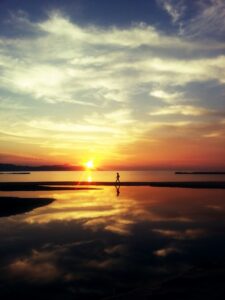
投稿タイプ:sightseeing
Hamazume Yuhigaura Beach
Located in Kyoto Prefecture's Kyotango City, Hamazume Yuhigaura Beach is a long beach stretching 8 km from Shotenkyo Kazuranohama Beach.
The beach is one of Japan's 100 Locations with White Sand and Pine Trees, and has fine white sand that stretches for miles, with beautiful, shallow and very transparent water flowing alongside.
The name "Yuhigaura" means "sunset bay" in Japanese, and as the name would suggest, it is a perfect location for watching the sunset, with benches provided on Sunset Street (Yuhi-no-Michi) along the beach to relax.
Also, since the spring of 2017, a beachside swing called "Yurari" ("swaying" in English) made from driftwood has been built on the beach every summer. It has become famous in recent years through its popularity on social media.
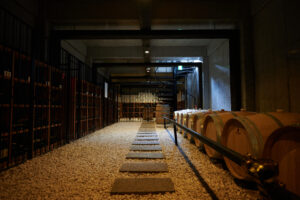
投稿タイプ:sightseeing
Amanohashidate Winery
This local Tango winery produces Tango wine, from grapes grown and picked in the vineyard on site. Using the latest German machinery, the winery employs its production technology using German know-how in every aspect of the winemaking process, from preparation to storage.
At the restaurant on the second floor, you can eat dishes made from locally-produced ingredients while enjoying some the winery's own wine.
Wine production facilities: Juice extraction, fermentation and bottling facilities.
Types of wine: White, rosé, red
Visitors Area: See the wine production process, refreshment corner, shop, art gallery.
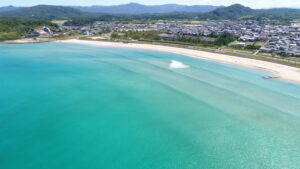
投稿タイプ:sightseeing
Hatchohama Beach
Hatchohama Beach is located in Amino-cho, Kyotango City. It is a shallow and beautiful beach with crystal clear waters.
The white sand of the beach stretches out like an island resort, and it is also a popular surfing spot.
There are also some rocky areas which are perfect for collecting seashells or discovering small wildlife. At Hatchohama Seaside Park, you'll also find a playground, so there are many places for children to enjoy.
The name Hatchohama comes from the traditional measurement used in Japan called "cho." As the name suggests, the length of the beach measures approximately 8 "cho" roughly equivalent to 872 m. A spacious beach perfect for relaxing and taking it easy.
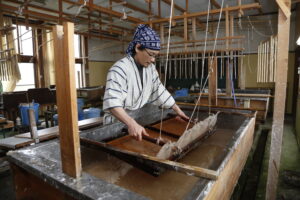
投稿タイプ:sightseeing
Kurotani Washi
You will find Kurotani Washi paper factory in a small riverside village set against a backdrop of forest. 800 years ago, when a rogue samurai fled to the area, he found the forests here were filled with mulberry trees and started making paper by hand. This ancient art is still practiced in the same location in Kurotani even to to this day.
Tour the village and workshops where paper is still being made slowly and carefully, all by hand. Try making washi paper yourself in a small workshop led by one of Kurotani's artisans.
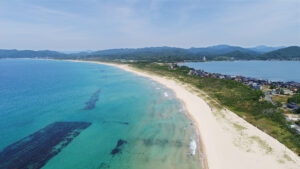
投稿タイプ:sightseeing
Shotenkyo Kazuranohama Beach
Shotenkyo Kazuranohama Beach is located in Kumihama-cho, Kyotango City. It is one of the longest beaches in the Kansai region, stretching 8 km from here to Hamazume Yuhigaura Beach.
The shallow waters are perfect for children to play in and enjoy.
The clean, transparent water and the white sandy beach dotted with pine trees makes for a beautiful sight. This beach is also ranked as Japan's 88th best beach.
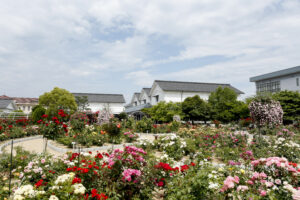
投稿タイプ:sightseeing
Ayabe Gunze Square
Ayabe Gunze Square consists of three facilities, Ayabe Specialty Store, Gunze Museums, and Ayabe Rose Garden. People who visit Ayabe's Gunze Square will have plenty to do, from touring the flower garden, to visiting the museums dedicated to Ayabe's role in Japanese history. There is also a specialty goods shop selling Ayabe products, as well as an area to get tourist information and a café. The square is expansive and a great place to relax. It is also within walking distance to a lot of Ayabe's downtown sites, including the train station.
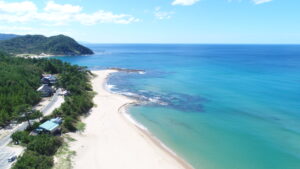
投稿タイプ:sightseeing
Kotohikihama Beach
Kotohikihama Kakezu Beach in Amino-cho, Kyotango City is a scenic beach with white sand and pine trees. It is famous for being the largest "singing sand" beach in Japan, with a total length of 1.8 km. The main component of singing sand is quartz, which produces a unique squeaky tone only on sandy beaches with clean water and few impurities. For this reason, environmental conservation is important, and this was the first non-smoking beach in the world.
On the beach, there is an open-air bath with a natural source of flowing hot spring water where you can bathe for free (mixed-gender bathing, and a bathing suit is required). You can enjoy the beautiful view of the sea while relaxing in the hot spring bath.
Every year at the beginning of June, a "Barefoot Concert" (Hadashino Concert) is held here. The entrance fee is helping out with the beach cleaning before the concert starts! Flea markets are also set up in addition to the concert.
In addition to being a designated national natural monument, Kotohikihama Kakezu Beach has also entered numerous selections, such as the 100 Soundscapes of Japan, the 100 Coasts of Japan, the 100 White Sand and Pine Trees of Japan, and the 200 Natural Spots of Kyoto Prefecture.
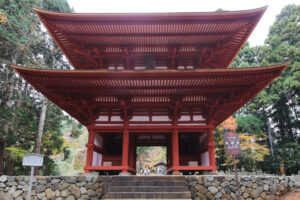
投稿タイプ:sightseeing
Niomon Gate and Komyo-ji Temple
You'll find Komyo-ji Temple on a mountain slope in the forests of Ayabe City. It was said to have been founded by the legendary Prince Shotoku (572-622). The temple's main Niomon Gate was constructed in 1248 and was designated as a National Treasure in 1954. The gate has a gabled roof with rare shingles that aren't commonly found in Japan.
The temple and gate are along walking trails just up the road from Ayabe Onsen. These trails lead to a great horse chestnut tree, which is estimated to be nearly 2,000 years old.
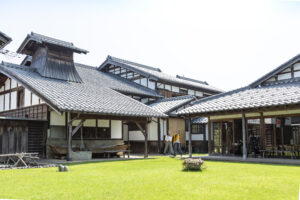
投稿タイプ:sightseeing
The Inaba Merchant’s House
The Inaba family are decendents of a subordinate of 14th century warlord Oda Nobunaga. They became rich by selling malted rice, and did shipping commerce along the coast. In 1735 they were in charge of the shogunate funds of the Kumihama area (similar to the central bank today), and became the top merchants in the area. The merchant family's rich life is exhibited here, and the building itself is registered as a Tangible Cultural Property of Japan. Inside there are pieces of pottery, incense, and china-painting workshops, as well as a restaurant for barazushi (a type of sushi with ingredients spread on rice) and botamochi cakes.
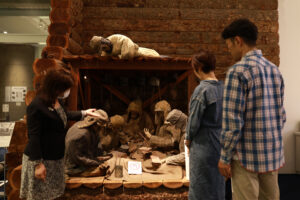
投稿タイプ:sightseeing
Maizuru Repatriation Memorial Museum
After the end of the Second World War, the Port of Maizuru was designated by the government as one of several ports through which repatriates could enter their homeland. Over 13 years it has received repatriates from old Manchuria, Korea, and Siberia, the majority of whom (around 600,000) were kept in forced-labour camps in Siberia. The Maizuru Repatriation Memorial Museum tells the story of this period, shows the warm welcome of the Maizuru people towards the returning soldiers, and proclaims the value of peace to the world. Clothes from the labour camps are exhibited, as well as letters and diaries written by soldiers to their families. In 2015, 570 items, including the famous Shirakaba Diary (a diary written on the bark of Siberian silver birch), were inscribed on the UNESCO Memory of the World Register.
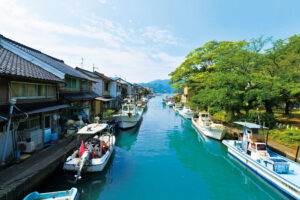
投稿タイプ:sightseeing
Yoshiwara
The Yoshiwara area of Maizuru City is about 1.7 kilometers from the nearest railway station, JR Nishimaizuru Station.
During the Edo period, the fishing town was moved from Nishimaizuru to its current location. Boasting a history of 300 years, the town’s narrow roads are positioned like tessellated pavement, and there are canals for the coming and going boats. Despite the long period of time since they were built, the old houses still stand, allowing us to see a sight uncommon in normal fishing towns. The houses are long and narrow, built side by side with hardly any space in between, while the back door connects to the canal, allowing boats to sail directly from the houses. There are about 100 of these houses, which are not unlike the boathouses in Ine, and they can be seen all over the town.
Often dubbed Asia’s Venice, walking through Yoshiwara is like traveling in time back to the 1930s, where you can enjoy the quaint fishing town’s laid-back atmosphere.
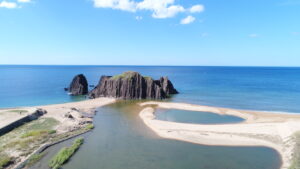
投稿タイプ:sightseeing
Tateiwa (Standing) Rock
Tateiwa (pronounced Tateh-Ihwa) Rock is a part of Japan's San'in Coast Geopark. It is located on Nochigahama Beach in Kyotango City, Kyoto Prefecture. Standing at 20 meters tall, it is one of Japan's largest monoliths and is made from a type of volcanic rock called andesite.
According to legend, when Prince Maroko (the half-brother of the legendary Prince Shotoku) killed an oni (a demon in Japanese folklore) on this spot, the oni became trapped in the enormous rock overnight. It's said that even now, on nights when the winds are strong and waves are high, you can still hear the cries of the oni trapped within.
Tateiwa got its name from the way it stands tall (tate = stand/vertical, iwa = rock), and creates beautiful scenery with the way it stands out of the Sea of Japan.